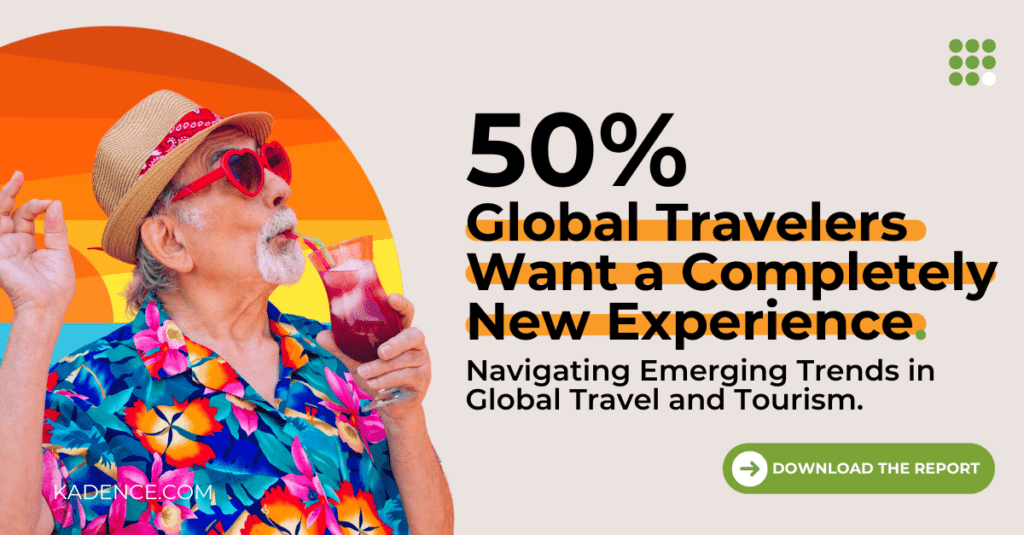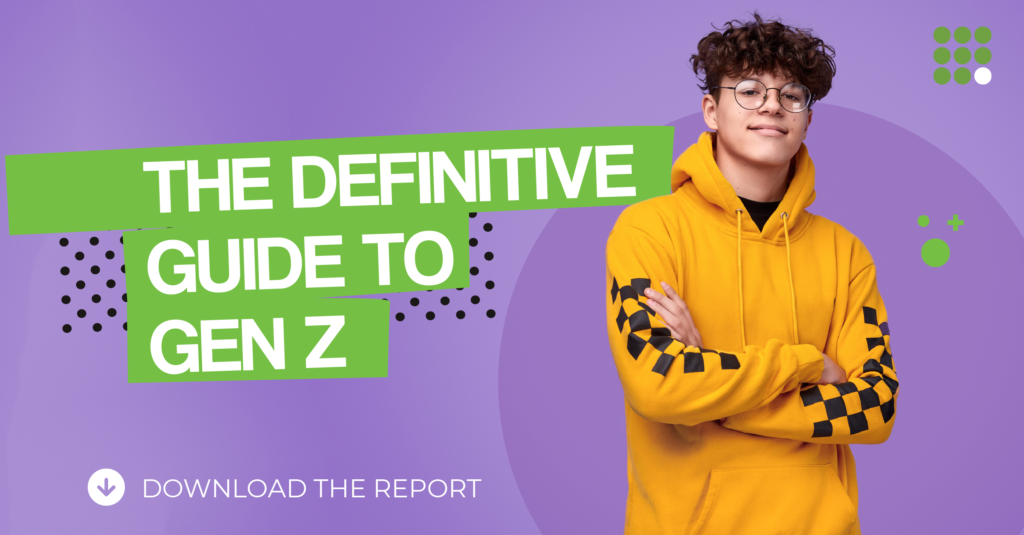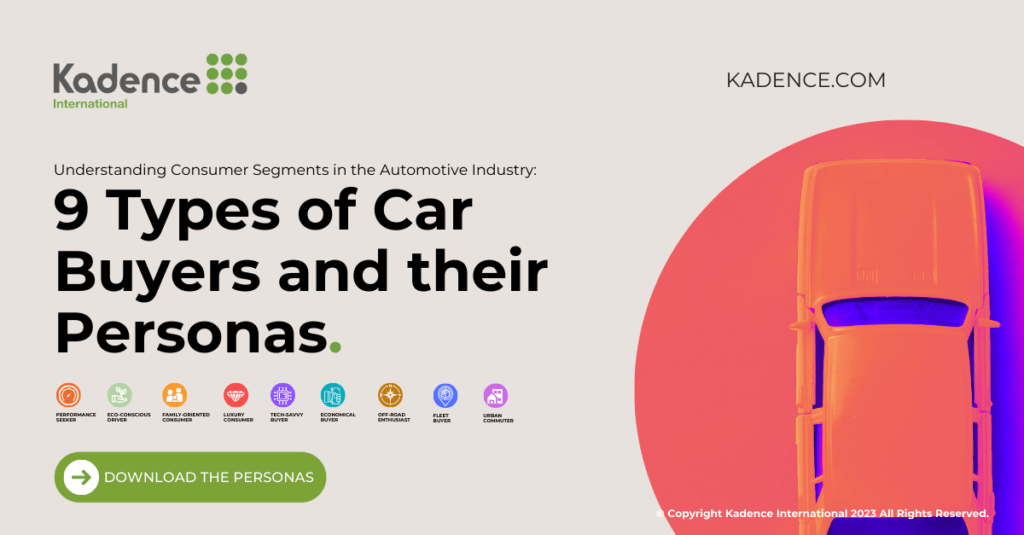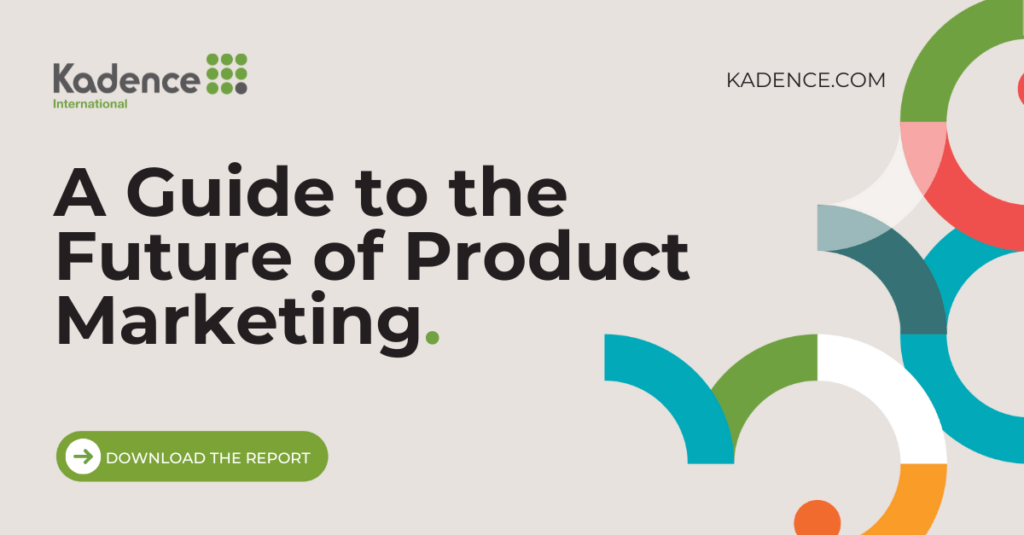Establishing a strong brand presence is paramount for success. However, simply creating a brand is not enough. To ensure its longevity and effectiveness, constant monitoring and evaluation are essential. This is where brand tracking comes into play.
Brand tracking is the systematic process of measuring and analyzing a brand’s performance, perception, and impact in the marketplace.
Brand tracking gives marketers invaluable insights into how customers perceive their brand, how it compares to competitors, and how it evolves over time. By closely monitoring brand performance, businesses can make informed decisions, identify areas for improvement, and craft effective marketing strategies.
The importance of brand tracking cannot be overstated. In an ever-changing business environment, where consumer preferences and market dynamics constantly evolve, understanding how your brand is perceived and how it performs against key metrics is crucial. Without this knowledge, businesses risk losing relevance, missing opportunities, and falling behind competitors.
Brand tracking also enables businesses to measure and track brand equity, encompassing a brand’s value, recognition, and loyalty. By monitoring brand equity, marketers can identify strengths and weaknesses, track the effectiveness of branding initiatives, and make data-driven decisions to enhance brand value.
Additionally, brand tracking allows businesses to track customer perceptions and sentiments. By gathering data on customer opinions, preferences, and experiences, companies can identify shifts in customer sentiment, address potential issues, and tailor their messaging and offerings to meet customer expectations.
Last but not least, brand tracking helps businesses gain a comprehensive understanding of their market share. By monitoring market share trends and comparing them with competitors, companies can assess their position in the market, identify growth opportunities, and develop effective market penetration strategies.
Benefits of Brand Tracking
Implementing brand tracking strategies offers numerous advantages and benefits to companies. Let’s delve into these benefits in detail:
Informed Decision-Making: Brand tracking gives businesses the data and insights needed to make informed decisions. Companies can assess the effectiveness of their branding and marketing efforts by collecting and analyzing relevant metrics, such as brand awareness, customer loyalty, and market share. This enables marketers to identify what is working and what needs adjustment, allowing for data-driven decision-making that leads to improved business outcomes.
Measuring Brand Equity: Brand tracking allows companies to measure and track brand equity, representing the value and strength of a brand in the minds of consumers. Through brand equity measurement, companies can assess their brand’s overall health and perception, track its performance over time, and identify the factors contributing to its success. This helps marketers understand their brand’s value in the marketplace and make strategic decisions to enhance brand equity.
Tracking Customer Perceptions: Understanding how customers perceive a brand is essential for maintaining a strong market position. Brand tracking enables businesses to track customer perceptions by gathering feedback, measuring customer satisfaction, and monitoring sentiment analysis. By assessing customer perceptions, companies can identify areas where their brand excels and areas where improvements are needed. This knowledge empowers marketers to align their brand messaging, products, and customer experiences with customer expectations, increasing satisfaction and loyalty.
Identifying Areas for Improvement: Brand tracking gives organizations insights into areas where improvements can be made. Companies can identify gaps and weaknesses in their brand strategy by analyzing customer satisfaction, brand loyalty, and market share metrics. This enables marketers to pinpoint areas for improvement and take proactive steps to address them. Whether it involves refining product offerings, adjusting pricing strategies, or enhancing brand communication, brand tracking helps businesses stay ahead of the competition and meet evolving customer needs.
Key Metrics and KPIs
Brand tracking relies on key metrics and key performance indicators (KPIs) that provide valuable insights into brand performance. These key metrics and KPIs form the foundation of brand tracking, providing businesses with a comprehensive understanding of brand performance, customer perceptions, and market dynamics. Let’s explore some essential metrics and their significance:
Brand Awareness: Brand awareness measures the extent to which consumers are familiar with a brand and its offerings. It provides insights into the reach and recognition of a brand among its target audience. Metrics like aided and unaided brand awareness, recall, and recognition rates help assess the effectiveness of marketing efforts in creating brand visibility and recognition.
Customer Loyalty: Customer loyalty metrics gauge the level of customer commitment and attachment to a brand. Metrics like customer retention rate, repeat purchase rate, and net promoter score (NPS) provide insights into the loyalty and advocacy of existing customers. These metrics help assess the effectiveness of customer retention strategies, customer satisfaction, and the likelihood of customers recommending the brand to others.
Market Share: Market share measures the portion of the market that a brand captures compared to its competitors. It helps businesses understand their position within the industry and their relative success in attracting customers. Market share metrics enable companies to assess their brand’s performance with competitors, identify market trends, and evaluate the effectiveness of marketing and sales strategies.
Brand Perception and Image: Brand perception metrics focus on understanding how customers perceive a brand and its attributes. This includes metrics such as brand associations, brand personality, and brand image. Companies can identify gaps between desired brand image and customer perceptions by measuring customer perceptions, allowing them to make strategic adjustments to align their brand messaging and positioning.
Sentiment Analysis: Sentiment analysis involves analyzing customer opinions and sentiments towards a brand. By utilizing natural language processing (NLP) techniques, sentiment analysis tools can quantify and categorize customer feedback from various sources, such as social media, reviews, and surveys. This provides insights into customer sentiment, satisfaction levels, and potential issues or opportunities for improvement.
Brand Equity: Brand equity metrics assess a brand’s overall value and strength. These metrics measure factors such as brand recognition, brand loyalty, perceived quality, and brand associations. By tracking brand equity, businesses can evaluate their brand’s performance over time, identify areas for improvement, and make informed decisions to enhance brand value and relevance.
Brand Tracking Methods and Tools
Brand tracking employs various methods and tools to gather data and insights about a brand’s performance. These approaches range from traditional methods to modern techniques that leverage technology and analytics. Let’s explore some of the common methods and tools used in brand tracking:
Surveys: Surveys have long been a staple in brand tracking research. They involve collecting feedback directly from customers through structured questionnaires. Surveys can measure brand awareness, customer satisfaction, brand perception, and other key metrics. They provide quantitative data that can be analyzed to understand customer preferences, sentiment, and behavior. Online surveys, telephone surveys, and in-person interviews are commonly used survey methods.
Social Media Monitoring: With the rise of social media, tracking brand mentions, discussions, and sentiments on platforms like Twitter, Facebook, and Instagram has become crucial. Social media monitoring tools allow companies to track brand conversations, identify influencers, and measure sentiment analysis. By monitoring social media, companies can gain real-time insights into how their brand is perceived and engage with customers directly.
Sentiment Analysis Tools: Sentiment analysis tools use natural language processing (NLP) and machine learning algorithms to analyze and categorize customer sentiment in text data. These tools can process customer reviews, social media comments, and other textual data sources. By automatically classifying sentiment as positive, negative, or neutral, brands can gain a deeper understanding of customer opinions and identify areas for improvement.
Web Analytics: Web analytics tools track and analyze website and online campaign data. They provide insights into website traffic, user behavior, conversion rates, and other relevant metrics. Web analytics can help measure brand awareness by tracking website visits, time spent on site, and page views. These tools allow organizations to understand how customers interact with their online presence and optimize their digital marketing strategies accordingly.
Competitive Benchmarking: Competitive benchmarking involves comparing a brand’s performance against its competitors. This method provides insights into market share, customer perceptions, and competitive positioning. Brands can monitor competitors’ marketing campaigns, customer feedback, and social media presence to identify strengths and weaknesses. By benchmarking against industry leaders and competitors, businesses can set performance targets and identify areas for improvement.
Online Reviews and Ratings: Online reviews and ratings platforms, such as Yelp, Google Reviews, and Amazon, offer valuable customer feedback. Monitoring and analyzing customer reviews provide insights into brand reputation, customer satisfaction, and areas for improvement. By analyzing online reviews, brands can identify common pain points, address customer concerns, and improve the overall customer experience.
These methods and tools can be used individually or in combination to gather data and insights for brand tracking. The choice of methods and tools depends on the specific goals, resources, and target audience of a brand tracking initiative. By leveraging a mix of traditional and modern approaches, businesses can comprehensively understand their brand’s performance and make informed decisions to drive success.
Brand Tracking Best Practices
It is essential to follow best practices that maximize the value of the insights gained from brand tracking research and insights. Here are some practical tips and best practices to consider:
Set Clear Goals: Clearly define the goals and objectives of your brand tracking initiative. Identify the metrics you want to measure and the insights you hope to gain. Setting clear goals helps focus efforts and ensures the tracking process aligns with broader business objectives.
Select Appropriate Metrics: Choose metrics that align with your brand objectives and provide meaningful insights. Consider metrics such as brand awareness, customer loyalty, market share, and sentiment analysis. Selecting the right metrics ensures that you track what matters most to your brand’s success.
Collect Accurate Data: Ensure the accuracy and reliability of your data by using appropriate data collection methods. Whether it’s surveys, social media monitoring, or web analytics, employ validated techniques to collect data from relevant sources. Use proper sampling methods and ensure data quality to increase the reliability of your findings.
Analyze Results in Context: When analyzing brand tracking data, consider the broader context. Compare your brand’s performance to industry benchmarks, competitors, and market trends. This context allows for a more comprehensive understanding of your brand’s position and performance.
Take Actionable Steps: Transform insights into actionable steps. Identify areas for improvement or opportunities for growth based on the results of your brand tracking efforts. Develop action plans and strategies to address gaps, optimize marketing efforts, and enhance the customer experience.
Regularly Evaluate and Adjust: Brand tracking is an ongoing process. Regularly evaluate the effectiveness of your brand tracking initiatives and adjust your approach as needed. Stay updated with evolving industry trends and adjust your metrics and methods accordingly to ensure the relevance and effectiveness of your brand tracking efforts.
Integrate with Business Processes: Integrate brand tracking insights into your business processes and decision-making. Share findings with relevant stakeholders and departments to inform marketing strategies, product development, and customer experience enhancements. By integrating brand tracking into your organization, you can drive meaningful change and improvements.
By following these best practices, you can ensure that your brand tracking efforts are effective, actionable and contribute to your brand’s success. Continuously refine your approach based on feedback, adapt to changing market conditions, and leverage the insights gained to make informed decisions that drive your brand forward.
Common Brand Tracking Challenges and Solutions
Implementing brand tracking strategies comes with its share of challenges. Being aware of these challenges and having solutions in place can help ensure the effectiveness and reliability of your brand tracking efforts. Let’s explore some common challenges and potential solutions:
Challenge: Data Accuracy
Data accuracy is crucial for reliable brand tracking. Inaccurate or incomplete data can lead to misleading insights and hinder decision-making.
Solution
Ensure data accuracy by using standardized data collection methods and validated survey instruments. Double-check data entry and cleaning processes to minimize errors. Implement quality control measures to validate data integrity and reliability. Regularly audit and validate data to ensure accuracy over time.
Challenge: Sample Bias
Sample bias occurs when the selected sample does not represent the target population accurately, leading to skewed insights.
Solution
Use proper sampling techniques to ensure a representative sample. Random sampling or stratified sampling methods can reduce sample bias. Consider demographic and psychographic factors when selecting your sample to ensure diversity. Regularly evaluate and adjust your sampling strategy to account for changes in your target audience.
Challenge: Interpretation Issues
Interpreting brand tracking data accurately is essential. Misinterpretation can lead to incorrect conclusions and misguided decision-making.
Solution
Invest in skilled analysts or work with a market research agency with data analysis and interpretation expertise. Develop a comprehensive data interpretation framework to guide analysis and minimize subjective interpretations. Conduct cross-functional discussions to gain multiple perspectives on data interpretation.
Challenge: Privacy and Data Security
Maintaining data privacy and security is paramount in brand tracking. Businesses must protect customer information and adhere to data protection regulations.
Solution
Follow industry best practices for data privacy and security. Implement robust data protection measures, including encryption, access controls, and secure storage protocols. Obtain explicit consent from customers for data collection and use. Comply with relevant data protection regulations, such as GDPR or CCPA. Regularly audit and review data management practices to ensure compliance and maintain customer trust.
Future Trends in Brand Tracking
The field of brand tracking continues to evolve with advancements in technology and emerging trends. These emerging trends in brand tracking present exciting opportunities for businesses to gain deeper insights, drive personalized experiences, and make data-driven decisions. By embracing technological advancements and staying abreast of these trends, marketers can enhance their brand tracking practices and stay ahead in the rapidly evolving business landscape. Let’s explore some of the key future trends and their potential impact:
AI-driven Analytics: Artificial intelligence (AI) and machine learning algorithms have the potential to revolutionize brand tracking. AI-driven analytics can automate data collection, analysis, and interpretation, enabling real-time insights and proactive decision-making. AI algorithms can quickly process vast amounts of data, identify patterns, and provide predictive analytics for better forecasting and planning.
Predictive Modeling: Predictive modeling leverages historical data to predict future outcomes. Using machine learning algorithms, businesses can identify patterns and trends to forecast brand performance, customer behavior, and market dynamics. Predictive modeling enables proactive decision-making, allowing companies to anticipate changes and stay ahead of the competition.
Social Listening and Natural Language Processing (NLP): The growing importance of social media and online conversations have given rise to social listening tools and NLP techniques. These tools allow businesses to monitor brand mentions, sentiment, and customer feedback in real-time. NLP algorithms can analyze text data from social media, reviews, and customer feedback, providing valuable insights into customer perceptions, preferences, and trends.
Cross-Channel Tracking: With the proliferation of digital touchpoints, cross-channel tracking becomes essential for understanding customer journeys and brand interactions. Advancements in technology enable businesses to track customer interactions across multiple channels and devices, providing a holistic view of customer engagement. This helps marketers tailor their messaging and optimize marketing strategies based on a comprehensive understanding of customer behavior.
Personalization and Customization: Brand tracking is moving towards personalization and customization. Businesses can tailor brand experiences, products, and marketing messages to meet specific customer needs by collecting and analyzing individual customer data. Customization enables businesses to build stronger connections with customers and enhance brand loyalty.
Voice and Visual Brand Tracking: As voice and visual technologies, such as voice assistants and augmented reality, gain popularity, brand tracking is expanding to include these mediums. Tracking voice interactions, visual content engagement, and sentiment analysis in these formats provide additional dimensions for understanding customer behavior and brand perception.
Segmentation in Brand Tracking
Audience segmentation plays a significant role in brand tracking as it allows businesses to understand their customers’ preferences, behavior, and perception towards the brand on a more granular level. Dividing the target audience into specific segments helps in several ways:
Understanding Preferences: Audience segmentation enables businesses to identify and understand the unique preferences of different customer groups. By categorizing customers based on demographics, psychographics, or behavioral patterns, companies can gain insights into what drives their customers’ purchase decisions, their specific needs, and the factors influencing their brand preferences. This understanding helps tailor marketing strategies and brand messaging to resonate with each segment more effectively.
Analyzing Behavior: Segmentation allows businesses to analyze the behavior of different customer groups. Companies can identify trends, patterns, and opportunities by examining the purchasing patterns, engagement levels, and brand interactions of each segment. For example, a brand may discover that a specific segment is more likely to engage with its content on social media or make repeat purchases. This information enables marketers to create targeted campaigns and personalized experiences to maximize engagement and loyalty within each segment.
Customizing Offerings: Audience segmentation helps businesses customize their products, services, and brand experiences to meet the specific needs of different customer segments. By understanding each segment’s unique requirements and preferences, companies can develop tailored offerings that align with their target audience’s expectations. This customization enhances the overall customer experience, increases satisfaction, and strengthens brand loyalty.
Improving Brand Perception: Segmentation allows companies to monitor and manage the perception of their brand among different customer segments. By tracking the sentiment, feedback, and customer satisfaction within each segment, businesses can identify areas where brand perception may vary and take necessary steps to address any negative perceptions. This proactive approach helps maintain a positive brand image and fosters stronger relationships with customers in each segment.
Targeted Marketing Strategies: Audience segmentation allows for the development of targeted marketing strategies. By understanding each segment’s unique characteristics and preferences, businesses can effectively tailor their messaging, channels, and promotions to reach and engage with specific customer groups. This targeted approach maximizes the impact of marketing efforts, improves campaign performance, and ensures a higher return on investment.
Brand Tracking Frequency
Determining the optimal frequency of brand tracking activities depends on various factors and objectives. While brand tracking can be conducted continuously, there may be instances where specific intervals are more appropriate. Let’s explore the factors that influence the ideal tracking frequency:
Objectives and Goals: The specific objectives and goals of brand tracking are crucial in determining the frequency. If the aim is to monitor short-term marketing campaigns or track particular events, conducting brand tracking at specific intervals, such as weekly or monthly, may be more suitable. However, if the focus is on long-term brand health and performance, continuous or regular tracking is recommended to identify trends, monitor changes, and gain a holistic view of the brand’s performance over time.
Industry Dynamics: The industry in which a brand operates can impact the ideal tracking frequency. In fast-paced industries with rapidly changing consumer preferences or competitive landscapes, more frequent brand tracking may be necessary to stay ahead of trends and respond to market shifts. On the other hand, in industries with more stable dynamics, brand tracking at specific intervals may be sufficient to monitor performance and make strategic adjustments.
Customer Lifecycle: Consider the stage of the customer lifecycle with your brand. If you have a high customer turnover rate or a short customer lifecycle, more frequent brand tracking can help identify changes in customer preferences or behaviors. For brands with longer customer lifecycles or more loyal customer bases, brand tracking at specific intervals may be adequate to track changes and identify opportunities for further engagement.
Budget and Resources: The availability of budget and resources also influences the tracking frequency. Brand tracking can involve costs like survey administration, data collection, and analysis. Continuous tracking may require more significant resource allocation. Assess your budget and resource availability to determine the optimal frequency that balances the need for insights with practical considerations.
Marketing Events and Initiatives: Significant marketing events, such as product launches, rebranding, or major marketing campaigns, may warrant increased tracking frequency to monitor the impact and effectiveness of these initiatives. These events can provide valuable insights in real-time and inform timely adjustments to maximize results.
It is vital to strike a balance between gathering sufficient data and avoiding data fatigue. Continuous tracking may provide real-time insights, but it can also lead to an overwhelming amount of data that may be challenging to manage and analyze. Regularly evaluate the relevance and usefulness of the metrics being tracked to ensure that the frequency aligns with the objectives and resources available.
Data Privacy and Ethics In Brand Tracking
Maintaining data privacy and adhering to ethical guidelines are essential for brand tracking. Respecting and protecting customer information builds trust and ensures compliance with relevant data protection regulations. Here are some important considerations and measures businesses should take:
Consent and Transparency: Obtain explicit consent from customers before collecting their data for brand tracking purposes. Clearly communicate how the data will be used, stored, and protected. Provide transparency about the types of data collected, the tracking methods used, and the purposes behind the tracking. This empowers customers to make informed decisions and establishes a foundation of trust.
Anonymization and Data Security: Anonymize personal data whenever possible to protect customer privacy. Remove or encrypt personally identifiable information (PII) to ensure that individual identities cannot be linked to the collected data. Implement robust data security measures to protect customer information from unauthorized access, breaches, and cyber threats. This includes secure data storage, encryption, access controls, and regular security audits.
Compliance with Data Protection Regulations: Familiarize yourself with relevant data protection regulations such as the General Data Protection Regulation (GDPR), California Consumer Privacy Act (CCPA), or other applicable laws in your jurisdiction. Ensure compliance with these regulations, including provisions related to consent, data retention, customer rights, and data transfer. Design your brand tracking processes and data management practices with these regulations in mind.
Data Minimization: Only collect and retain the data necessary for brand tracking purposes. Minimize the amount of personal data collected and limit data retention to the required period. Regularly review data storage practices to ensure that data is kept for the appropriate duration and securely disposed of when no longer needed.
Vendor and Partner Selection: If you work with third-party vendors or partners for brand tracking, ensure they have robust data protection practices in place. Conduct due diligence to assess their data handling and security measures. Implement contractual agreements that clearly outline data protection responsibilities and requirements. Regularly monitor and audit these vendors to ensure ongoing compliance.
Privacy Policy and Opt-Out Options: Develop a comprehensive privacy policy that outlines how customer data is collected, used, stored, and protected during brand tracking activities. Include opt-out options for customers not wishing to participate in data collection. Respect customer choices and promptly honor their preferences regarding data usage.
Measuring Brand Tracking ROI and Impact
Measuring the return on investment (ROI) of brand tracking efforts is crucial to understand the value and impact it brings to a business. While brand tracking is often associated with intangible outcomes, there are methodologies to evaluate its impact on business outcomes, such as revenue growth, customer acquisition, and customer retention. Here’s how you can measure the ROI and assess the effect of brand tracking:
Establishing Key Performance Indicators (KPIs)
Start by identifying KPIs aligning with your brand tracking objectives and desired business outcomes. These KPIs can include revenue growth, customer acquisition rate, customer retention rate, brand perception, market share, or customer lifetime value. Clear and measurable KPIs provide a foundation for evaluating the impact of brand tracking efforts.
Baseline Measurement
Before implementing brand tracking initiatives, establish a baseline measurement for the identified KPIs. This baseline represents the initial performance levels before any changes are made. It serves as a reference point for comparing the impact of brand tracking efforts over time.
Tracking Changes
Continuously track the selected KPIs over time as brand tracking initiatives are implemented. Regularly collect and analyze data to monitor changes in these metrics. This can be done through surveys, data analytics, social media monitoring, and other relevant data sources. Ensure that data collection and measurement are consistent to enable accurate comparisons.
Attribution Analysis
To attribute changes in business outcomes to brand tracking efforts, conduct attribution analysis. This involves assessing the correlation between brand tracking metrics and the observed changes in business performance. Analyze the relationship between brand perception, customer engagement, and the desired outcomes, such as revenue growth or customer acquisition. This analysis helps determine the impact of brand tracking efforts on these outcomes.
Control Group Comparison
Establish control groups to compare the performance of the target audience exposed to brand tracking efforts with a group that is not exposed. By comparing the outcomes of these groups, you can isolate the impact of brand tracking initiatives on business results. Control groups help control external factors and provide a clearer understanding of the specific impact of brand tracking efforts.
Cost Analysis
Assess the costs associated with implementing brand tracking initiatives. Consider the expenses related to data collection, technology tools, resources, and personnel. Calculate the total cost of brand tracking efforts to compare with the observed impact on business outcomes.
Calculation of ROI
To measure the ROI of brand tracking efforts, calculate the ratio between the benefits or impact generated and the costs invested. ROI can be calculated as (Benefits – Costs) / Costs, expressed as a percentage. Consider both direct and indirect benefits, such as revenue growth, customer retention, improved marketing efficiency, or enhanced brand equity.
Long-term Assessment
Evaluate the impact of brand tracking efforts over the long term. It may take time for the full impact to materialize, especially for outcomes such as customer loyalty and brand perception. Monitor the trends and patterns over an extended period to assess the sustained impact and return on investment.
Brand Tracking for Global Brands
Brand tracking in a global context presents unique challenges and requires careful consideration of cultural differences, language barriers, and regional nuances. Understanding these factors is essential for accurate and effective brand tracking. Let’s explore the challenges and considerations when conducting global brand tracking:
Cultural Differences
Cultural differences significantly influence brand perception and consumer behavior. Different cultures may have distinct values, preferences, and communication styles. These variations can impact how a brand is perceived and the effectiveness of tracking methodologies. It is crucial to tailor brand tracking approaches to account for cultural nuances and ensure that data collection methods, survey questions, and analysis frameworks are culturally appropriate and sensitive.
Language Barriers
Language barriers pose challenges in global brand tracking. Conducting surveys or collecting data in different languages requires accurate translation and localization to ensure respondents fully understand the questions and can provide accurate responses. Language differences can also affect sentiment analysis and social media monitoring, as the nuances of language expressions may not directly translate. Utilizing language experts or native speakers for translation and interpretation is essential to maintain data accuracy and reliability.
Regional Nuances
Regional nuances can impact brand perception and tracking methodologies within specific geographical areas. Factors such as local competition, market dynamics, and consumer behavior patterns may vary across regions. Considering these regional nuances when selecting metrics, analyzing data, and interpreting brand tracking insights is essential. Adapting tracking strategies to address these differences helps ensure relevance and accuracy in measuring brand performance.
Localized Research Approaches
Implementing localized research approaches is crucial for effective global brand tracking. This involves adapting research methodologies to each region’s cultural and contextual differences. Conducting local market research, leveraging local data sources, and collaborating with local experts or research agencies can provide valuable insights and enhance the accuracy and relevance of brand tracking efforts.
Data Privacy and Legal Compliance
When conducting brand tracking on a global scale, it is crucial to adhere to local data privacy regulations and legal requirements. Different countries may have specific data protection laws, such as the GDPR in the European Union or the CCPA in California. Ensure compliance with local regulations regarding data collection, storage, and transfer to protect customer privacy and maintain legal compliance.
Resource Allocation
Conducting brand tracking globally requires careful resource allocation. Different regions may require different investment levels in data collection, research tools, translation services, and local expertise. Allocate resources based on the market importance, growth potential, and strategic priorities to ensure effective brand tracking across regions.
Collaboration and Local Engagement
Collaboration with local partners and market research agencies is vital in global brand tracking. Local teams can provide valuable insights into cultural nuances, market dynamics, and regional considerations. Engage with local experts to ensure tracking efforts align with local market conditions, consumer behaviors, and business objectives.
Continuous Improvement and Adaptation
Continuous improvement and adaptation are key to maintaining the effectiveness and relevance of brand tracking strategies. In the dynamic business landscape, it is essential for marketers and market researchers to regularly reassess their tracking strategies, adjust metrics based on changing business goals, and stay updated with evolving industry trends. Here’s why continuous improvement and adaptation are important in brand tracking:
Changing Business Goals
Business goals evolve over time, and brand tracking should align with these changing objectives. Regularly assess your business goals and ensure your brand tracking strategies align with them. As your brand expands into new markets, introduces new products, or targets different customer segments, reassess the metrics and tracking methods to capture the relevant data for those goals.
Evolving Industry Landscape
Industries constantly evolve, driven by technological advancements, market trends, and changing consumer behaviors. Stay updated with industry trends and changes that may impact brand tracking. New technologies, emerging social media platforms, or shifts in customer preferences may require adjustments to your tracking strategies. By monitoring industry developments, you can proactively adapt your brand tracking efforts to remain effective and relevant.
Relevance and Accuracy
Continuous improvement ensures your brand tracking efforts remain relevant and accurate. Regularly evaluate the metrics you track and assess their relevance to your strategic goals and objectives. Eliminate or modify metrics that no longer provide meaningful insights and introduce new metrics that align with emerging trends or specific business goals. By staying focused on the most relevant metrics, you can obtain accurate and actionable insights for decision-making.
Measurement Techniques
Evaluate your measurement techniques and methodologies periodically. As new research methodologies and technologies emerge, consider whether they could enhance your brand tracking efforts. For example, incorporating advanced analytics, machine learning algorithms, or sentiment analysis tools may provide deeper insights into customer perceptions and behaviors. Experiment with new measurement techniques to assess their effectiveness in improving the accuracy and efficiency of brand tracking.
Data Collection and Analysis
Continuously assess your data collection and analysis processes. Are the data sources still relevant and reliable? Is the data collection methodology aligned with industry best practices? Are your analysis techniques optimized for extracting meaningful insights? Regularly review and refine these processes to ensure accurate data collection, efficient analysis, and reliable reporting.
Benchmarking and Competitive Analysis
Benchmark your brand performance against competitors and industry peers to identify areas for improvement. Monitor their strategies, initiatives, and customer perceptions to gain insights into their success and areas where you can differentiate yourself. By staying aware of competitive landscapes, you can adapt your brand tracking strategies to respond to market changes and seize opportunities.
Agile Approach
Embrace an agile approach to brand tracking involving frequent evaluation and adaptation based on data-driven insights. Continuously gather feedback, assess results, and make iterative adjustments to your tracking strategies. Adopting an agile mindset allows you to respond quickly to market shifts, capitalize on emerging opportunities, and address challenges proactively.
Final Thoughts
Brand tracking is an indispensable tool for businesses in today’s competitive landscape. It goes beyond tracking numbers and metrics; it provides invaluable insights into customer perceptions, market trends, and the effectiveness of marketing efforts.
In an era where customers have more choices and louder voices than ever before, brand tracking allows marketers to understand their target audience, tailor their messaging, and deliver experiences that resonate. It helps build brand trust, enhance customer relationships, and differentiate from competitors.
Most importantly, brand tracking helps businesses stay ahead of the curve by identifying emerging trends and market shifts. By keeping a pulse on customer sentiments, preferences, and behaviors, companies can proactively respond to changing consumer needs and expectations.
Without brand tracking, businesses risk operating blindly, relying on assumptions and guesswork. Brand tracking provides tangible data and insights that support informed decision-making, leading to more effective marketing campaigns, improved customer experiences, and long-term business success.
It is imperative for businesses to embrace brand tracking and integrate it into their marketing strategies. Brand tracking is not just an optional activity; it is a strategic imperative. It empowers businesses to understand their brand’s impact, connect with customers on a deeper level, and drive growth in an ever-changing business landscape.
If you’re looking for a trusted partner to support your brand tracking initiatives, consider working with Kadence International. As a leading market research agency, we offer expertise, industry knowledge, and tailored solutions to help you gain actionable insights and drive your brand’s success. Contact us to learn more about our services and start your brand tracking journey today.
Stay ahead
Get regular insights
Keep up to date with the latest insights from our research as well as all our company news in our free monthly newsletter.
![]()


























 Senior Marketing Executive
Senior Marketing Executive Sales & Marketing
Sales & Marketing General Manager PR -Internal Communications & Government Affairs
General Manager PR -Internal Communications & Government Affairs Vital Strategies
Vital Strategies
 Customer Intelligence Director
Customer Intelligence Director